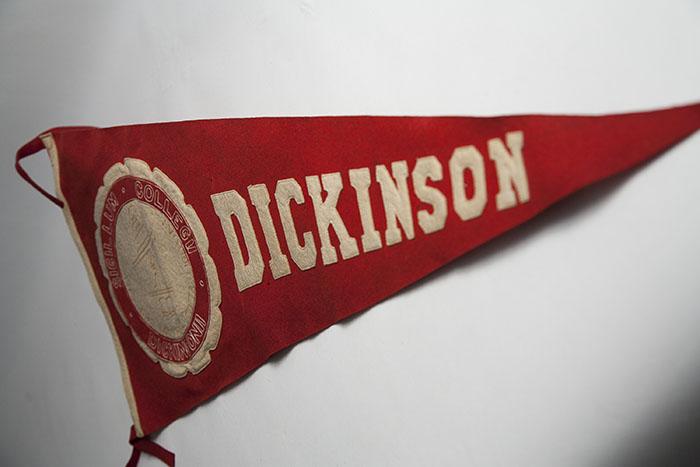Ask the Archivist: Red and White

How did red and white become the colors of Dickinson College?
The Belles Lettres Society was founded at Dickinson College in 1786. The Union Philosophical Society (UPS) was established three years later. These two literary societies, which encouraged both intellectual growth and camaraderie, established their own symbols and traditions through the years. Before the habit of wearing lapel pins came into fashion, members would proudly sport flowers that showed their affiliations—a red rose for Belles Lettres and a white rose for UPS.
By the 1880s, when intercollegiate athletics were becoming a part of campus life, these two literary societies already had been around for a century. Their members and their traditions were thoroughly woven into the fabric of the college’s history. It seems quite natural, then, that their symbolic colors would come to define Dickinson.
In 1900, Horatio Collins King, class of 1858, published Songs of Dickinson, which included several references to the school colors. Most notable among them is “The Red and White,” set to the tune of “Battle Hymn of the Republic.” Several red-and-white pennants from that same time period are carefully preserved in the archives vault, further evidence that the school colors were well established by the turn of the 20th century.
A side note to the school colors story is a bit of “what might have been.” As late as 1861, the Belles Lettres bylaws list the society’s badge as a pink rose, and members’ diplomas were adorned with a pink ribbon. A surviving 1868 diploma features a red ribbon, which suggests that the change from pink to red happened in the mid-1860s. No further documentation of this switch has been found, but imagine if Dickinson’s colors had become pink and white.
Published October 1, 2012